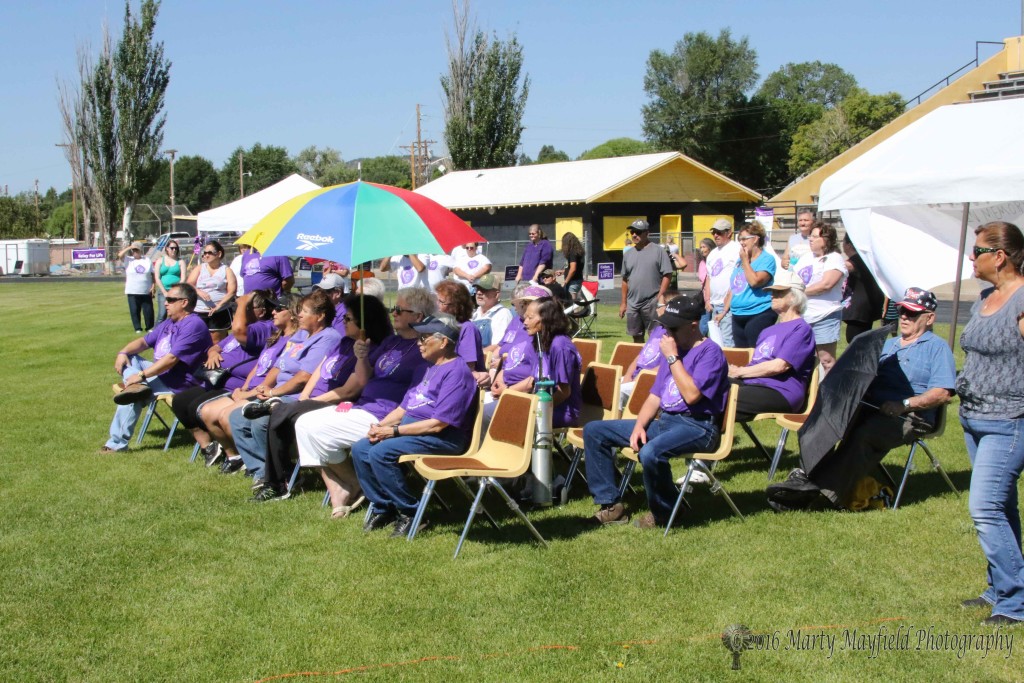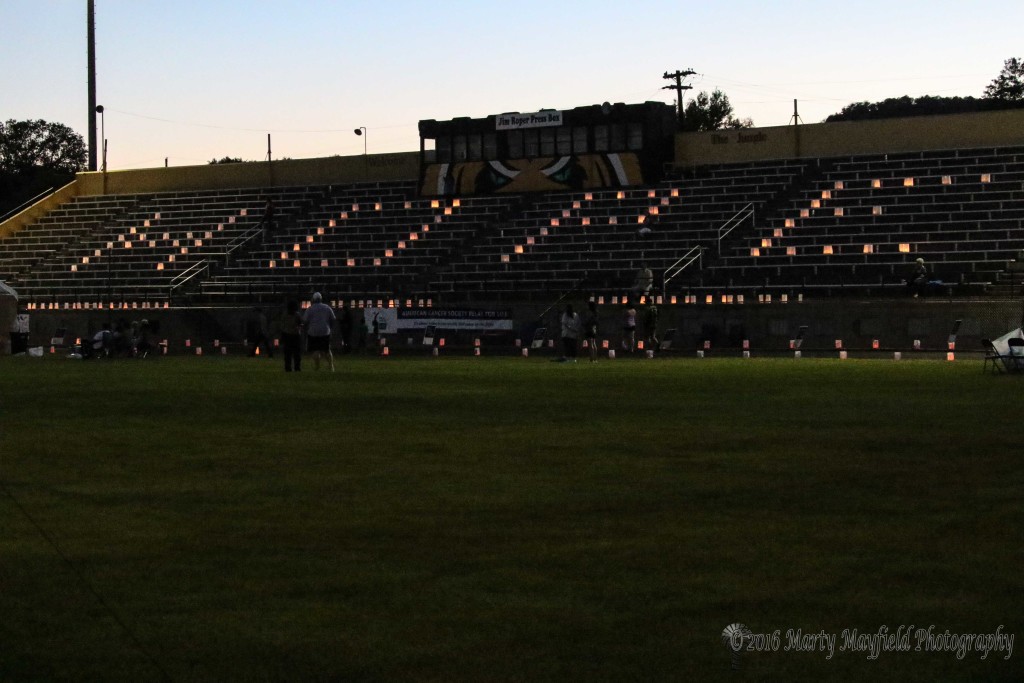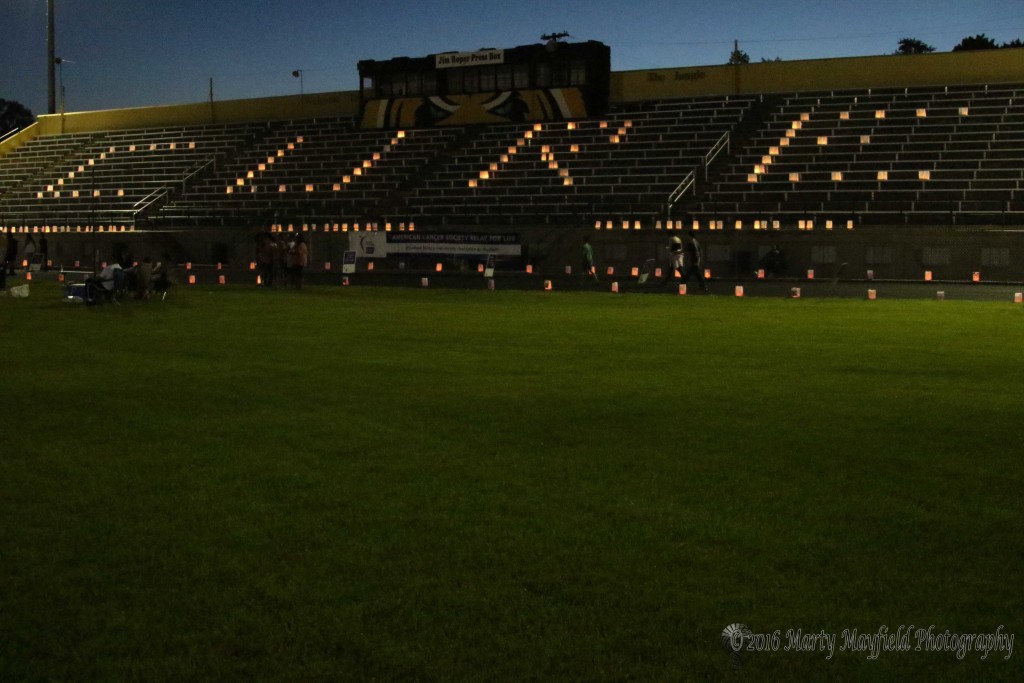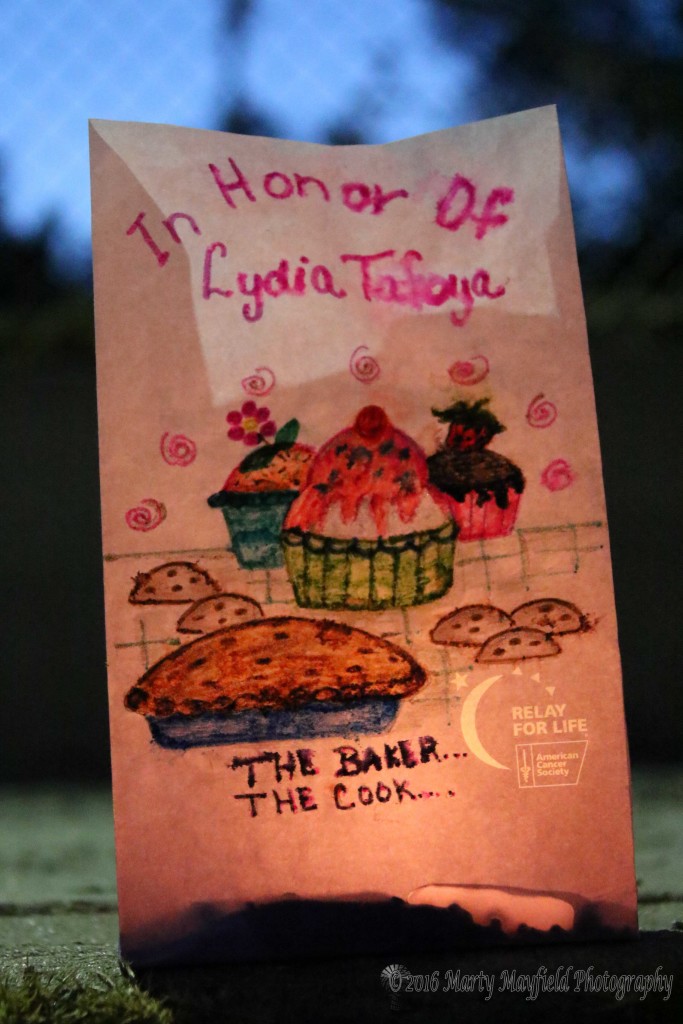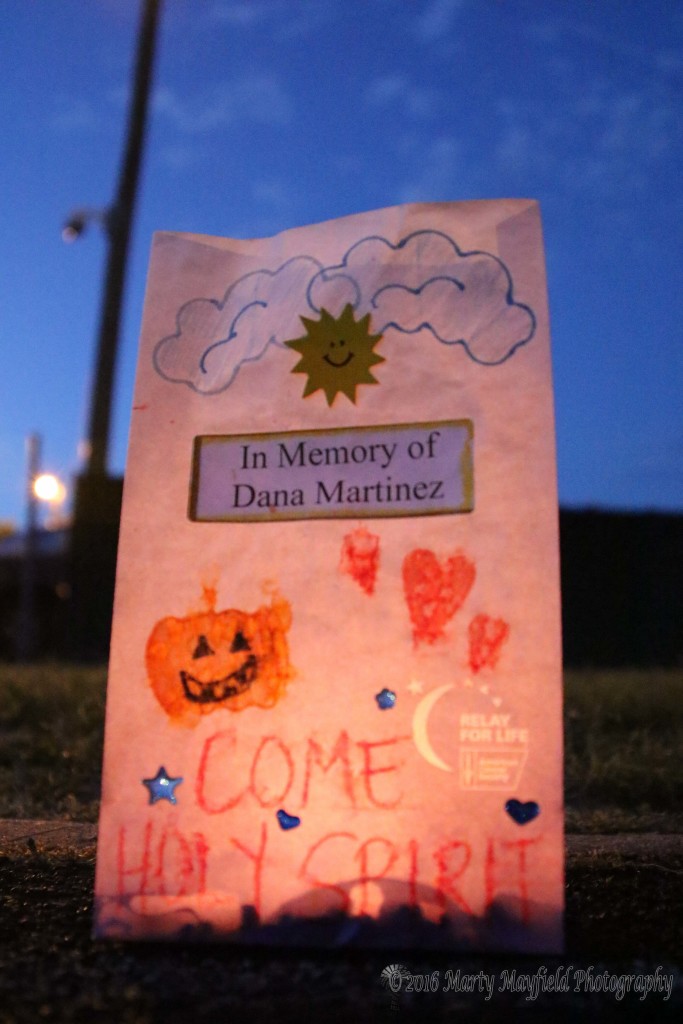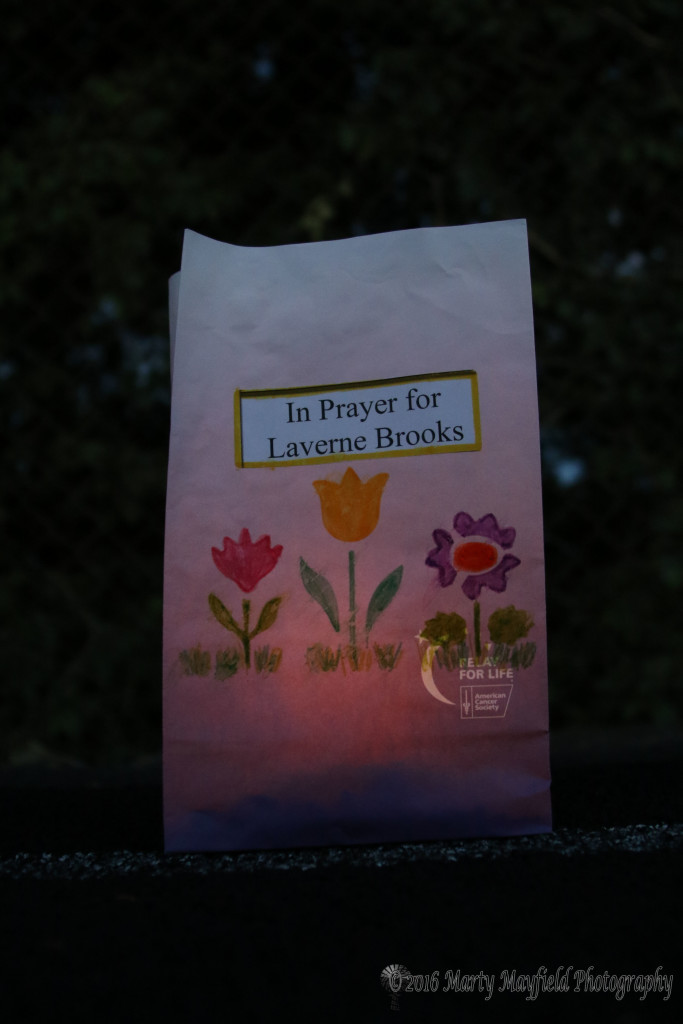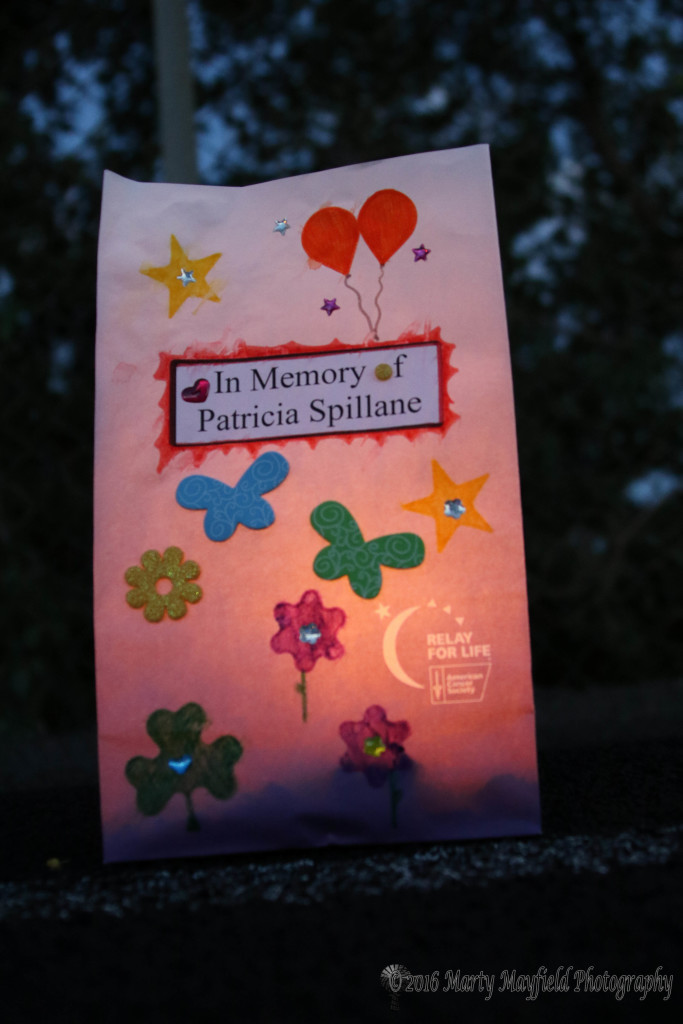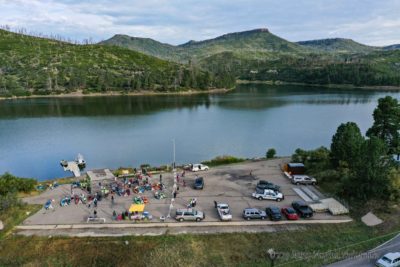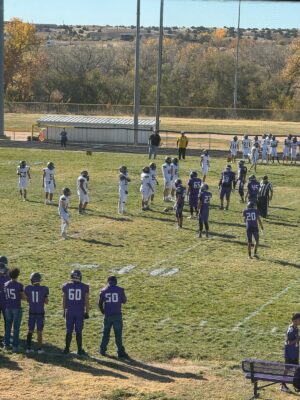By Marty Mayfield
KRTN Multi-Media –
Eric Armstrong known for his marathon running and physical fitness faced one of the toughest miles of his life after his 11th surgery in nine weeks.
Armstrong along with his wife Debbie told the crowd gathered at the 2016 Relay for Life about their battle with not only an aggressive cancer but other maladies that effected Eric’s life in so many ways. As Eric and Debbie told their story you could see the way they looked at each other and see how strong their relationship is and it had to be to with stand the battle Eric found in front of him. That battle lasted 3 1/2 years for the Armstrongs.
Eric related how there are three steps in life, the beginning, the middle and the end represented by the three stools on the stage. The first beginning in this battle began with an unknown issue that went undiagnosed for a long time it turned out to be a loss of brain fluid and meningitis, Eric had a whole in his head that was leaking fluid. That took a year and a half to diagnose and they thought finally the end of this problem was in sight, not. That issue was taken care of but along came another, Kidney stones from the brain medication and they couldn’t get the bleeding to stop. Blood clots were found in the lungs and surgery was scheduled again. He was then diagnosed with a very rare form of cancer Condraosarcoma. The journey began again back to the first stool for Eric and Debbie. Debbie noted this is a time when you can reach out to others for help you don’t have to go at it alone, accept the help that is given such as meals, mowing the lawn.
Several surgeries later the Armstrongs prepare for the one more surgery where Eric could loose an arm. The surgery would remove a large amount of bone from his right shoulder blade and the doctor said if its worse than we think we might have to remove your arm. Debbie emphasized the importance of reaching out and accepting that support. She noted how both her and Eric needed to talk to someone. As they took Eric down the hall, he once again had to leave his wife in the waiting room. Eric told the crowd he woke up from the surgery and with his left hand felt he still had his right hand. “I can deal with this.” he told the crowd. The day after surgery Eric said it was time to get out of bed, he gathers his stuff while he thinks about all of his patients. You see as a physical therapist he was often the first person to help get them out of bed for their first walk.
With everything gathered up, oxygen, IVs and his crocks on his feet, he shuffled to the door. As he arrives at the door the nurse sees hims and runs over and wants to know what he is doing up. He told her I am going for a walk and she told he had to wait for the physical therapist. The look on Eric’s face as he tells the crowd what he told the nurse, I have two, ones not worth any thing and one is pretty good. The nurse said it is good to see him up and she told him I want you to know its 26 laps around the unit to make a mile. He added, not the thing to tell me, I didn’t make it on my first try. I didn’t make it on my second try, but by the end of that day I had walked 26 laps, he emphasized I walked a mile.
Eric went on to say that cancer is not a respecter of persons, cancer is not a respecter of age, cancer is not a respecter of gender or physical fitness but you know what we don’t have to be a respecter of cancer either. He went on to tell the crowd that is what we are doing here today. To put one foot in front of the other to beat cancer.
This year the Relay for Life was held on a Saturday from 10:00 a.m. to 10:00 p.m. with a smaller than usual participation. The day had two funerals and other events going on which probably contributed to the lower attendance noted Mercy Swanson, one of the founding members of Relay for Life in Raton. Swanson has been doing Relay for 15 years now and under her tutelage Vanna Tapia became the event leader. Swanson also noted that it will also be a lean year in collecting funds. The funds the Relay for Life event collects stays in the community to help pay for transportation of patients to doctors appointment and to help find a cure for cancer.
“Its about being a community…. That takes up the fight” below was in the program for this year’s Relay to tell people what goes in for Relay.
What is a Relay For Life?
The American Cancer Society Relay For Life is a life-changing event that gives everyone in communities across the globe a chance to celebrate the lives of people who have battled cancer, remember loved ones lost, and fight back against the disease. At Relay, teams of people camp out at a local high school, park, or fairground and take turns walking or running around a track or path. Each team is asked to have a representative on the track at all times during the event. Because cancer never sleeps, Relays are overnight events up to 24 hours in length.
Who gets involved?
Everyone is encouraged to participate in Relay For Life, including friends, families, businesses, organizations, elementary schools, middle and high school students, college groups, churches, youth organizations, community groups and, most importantly, cancer patients and survivors. Two out of five Americans will be diagnosed with cancer during their lives, and everyone will be touched by cancer at some point. By being a part of Relay For Life, you are not only raising money to fund the mission of the American Cancer Society but you are also helping to raise awareness of this disease.
Where do the funds go?
Relay For Life raises funds to support the American Cancer Society mission of saving lives from cancer by helping people stay well, helping people get well, by finding cures, and by fighting back. While fundraising for Relay For Life is fun and competitive, it is also crucial to continuing the mission of the American Cancer Society. Since the American Cancer Society’s research program was started, more than $3.4 billion has been awarded to cancer researchers across the nation, including 47 who have gone on to win the Nobel Prize. Through Relay For Life, you make it possible for this lifesaving research, and all of the education, advocacy, and service programs of the American Cancer Society to continue.
Highlights from the 2016 Relay for Life and the Survivor and Caregiver talk by Eric and Debbie Armstrong a must see talk.
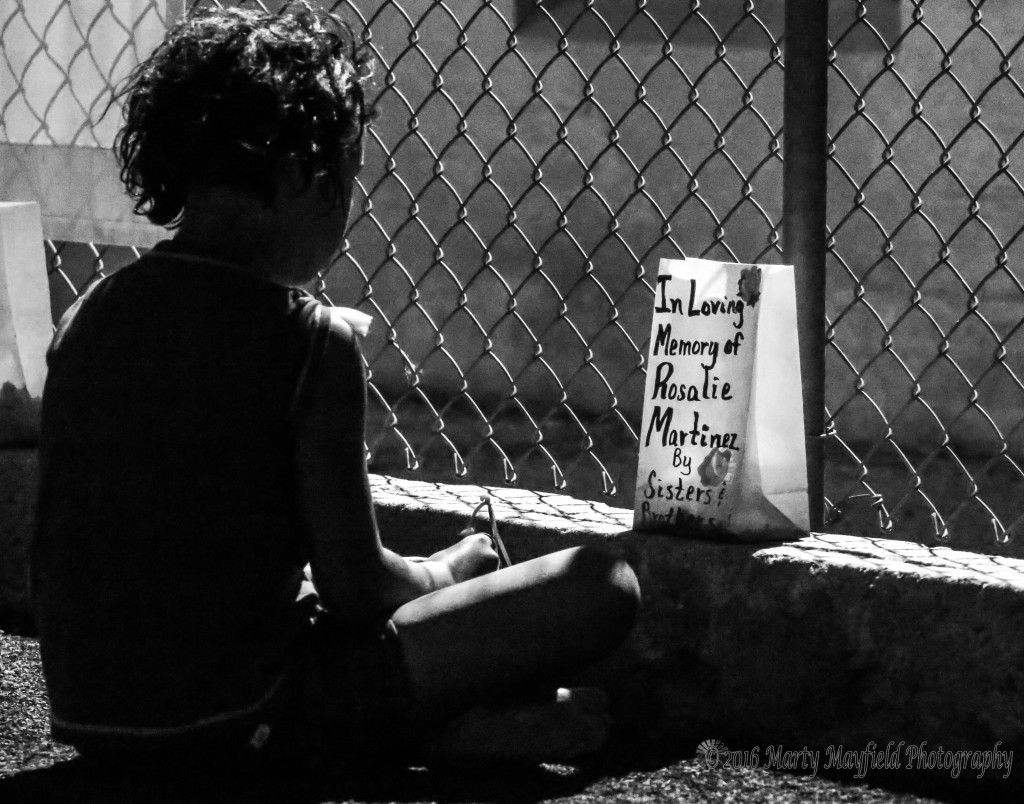
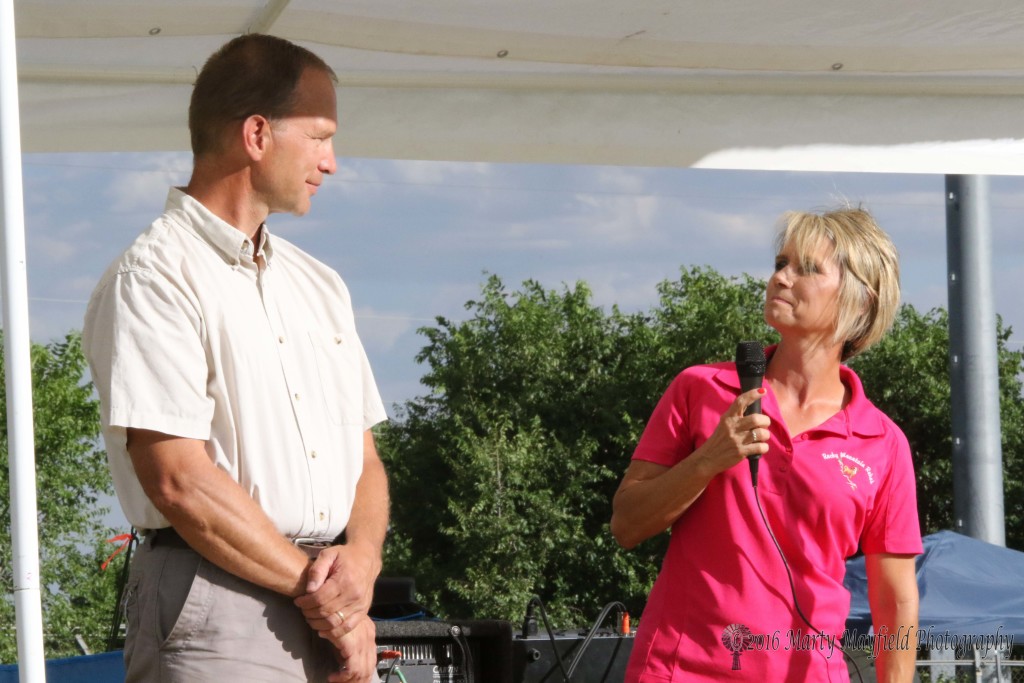
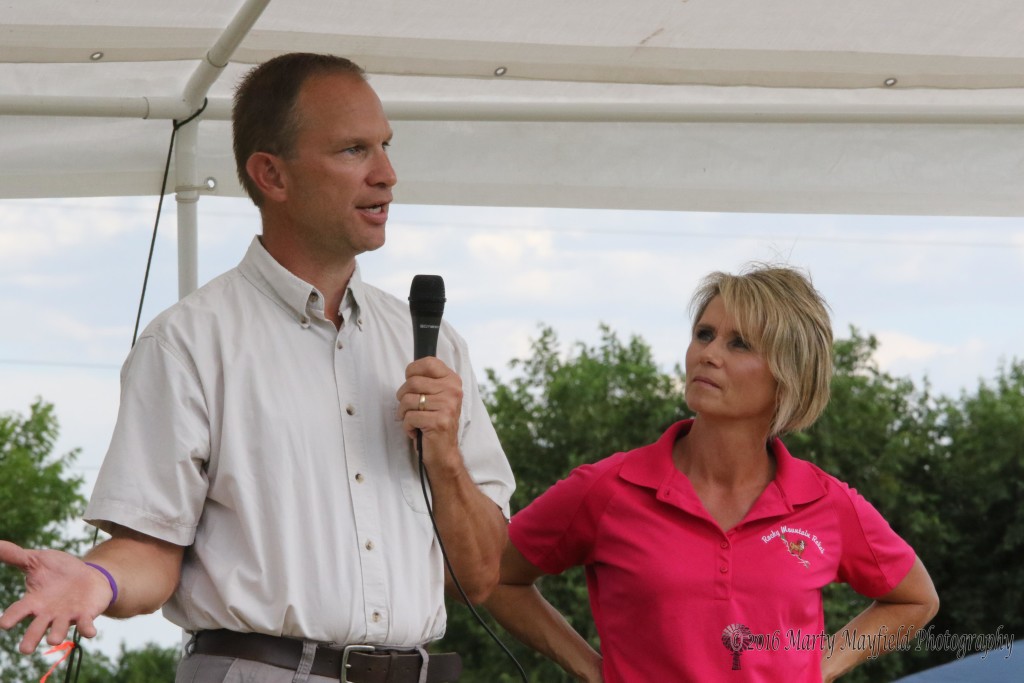
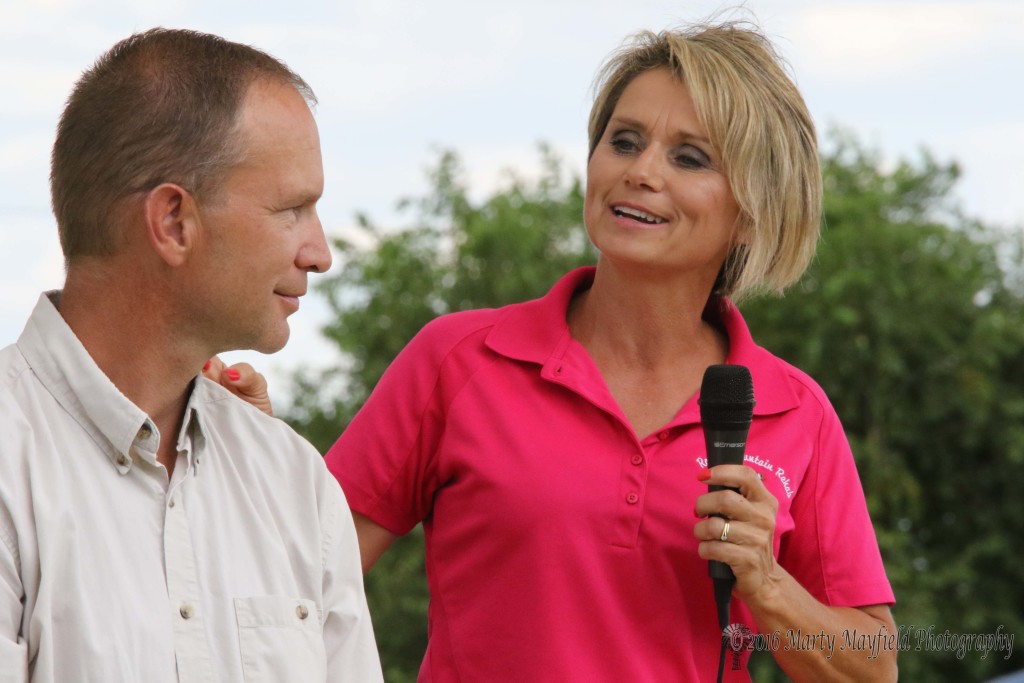
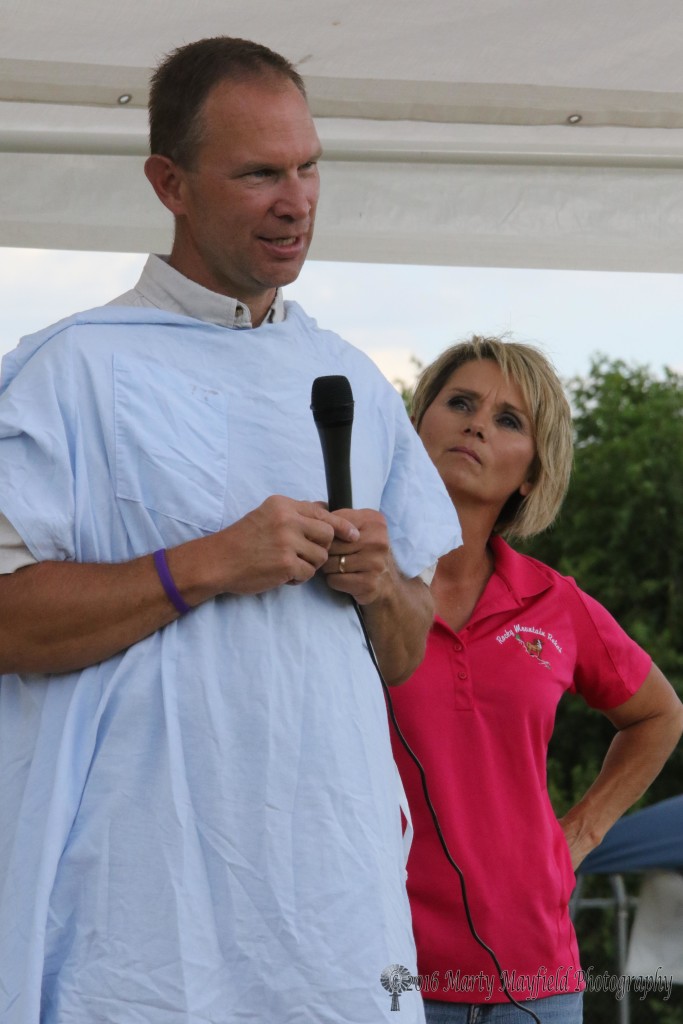
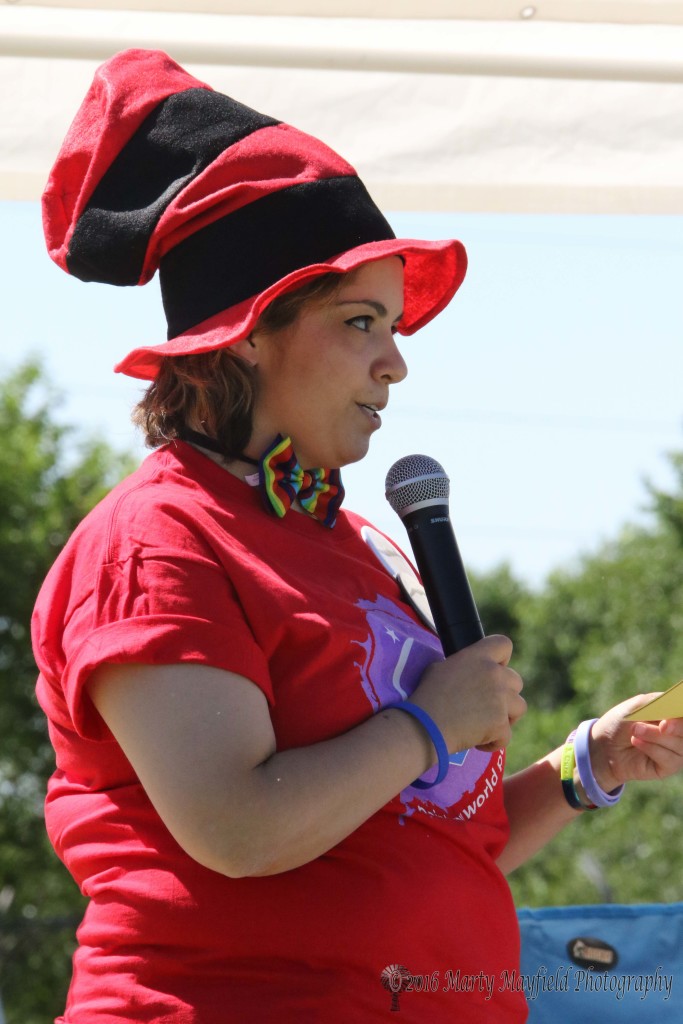
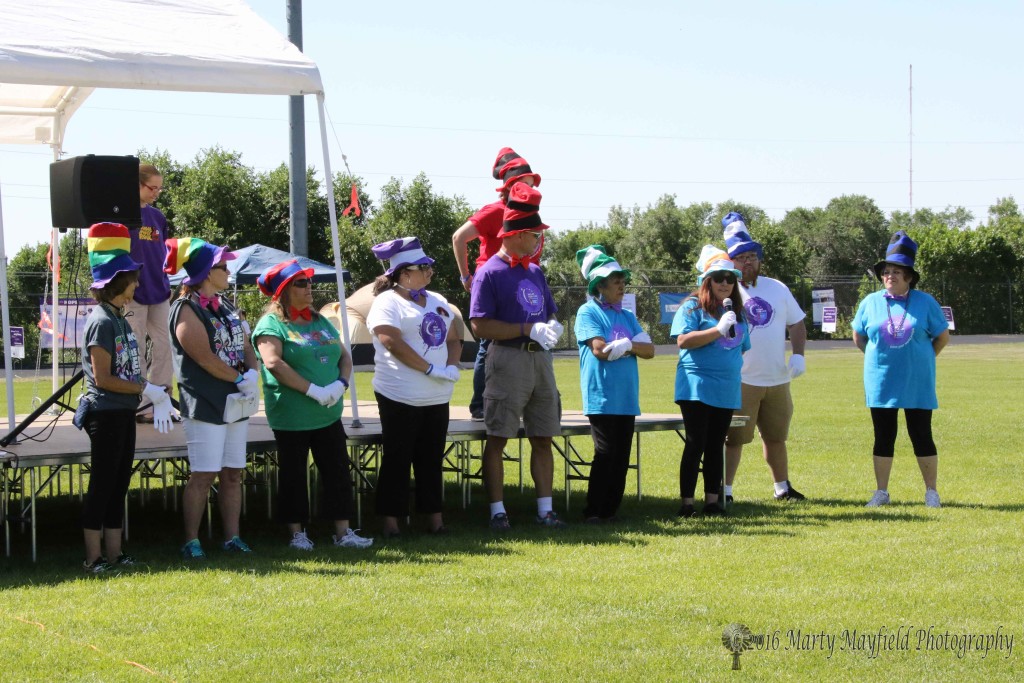
L to R: Mercy Swanson, Jami Esquibel, Diana Alderette, Rebecca Hoy, Eric Armstrong, Nancy Valdez, Liz Tafoya, Manual Luna ACS, Amelia Vigil Vanna Tapia on Stage with Laura Robinson who sang the National Anthem
